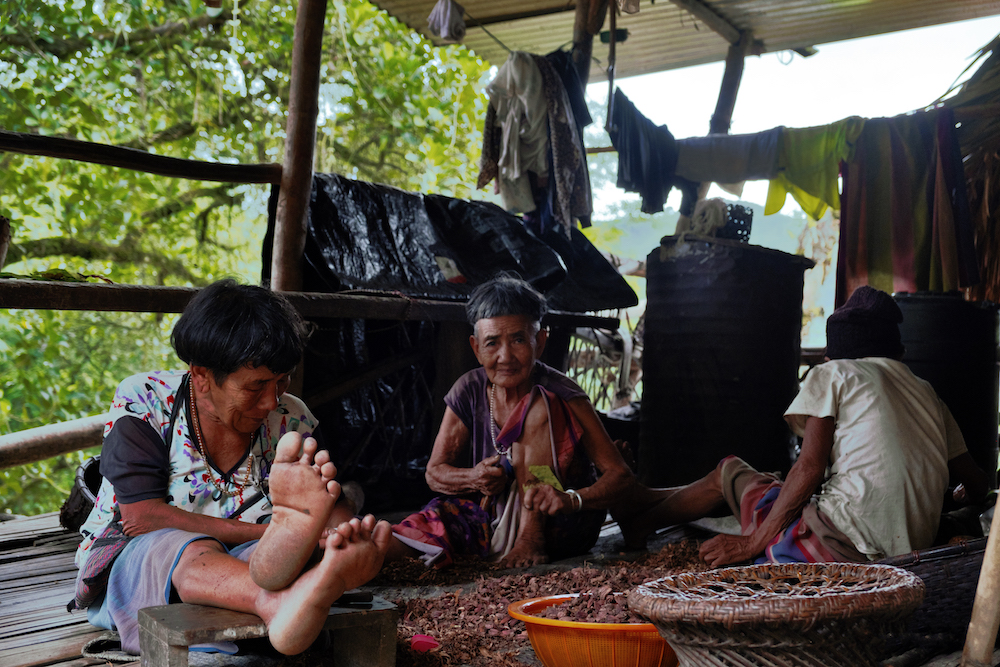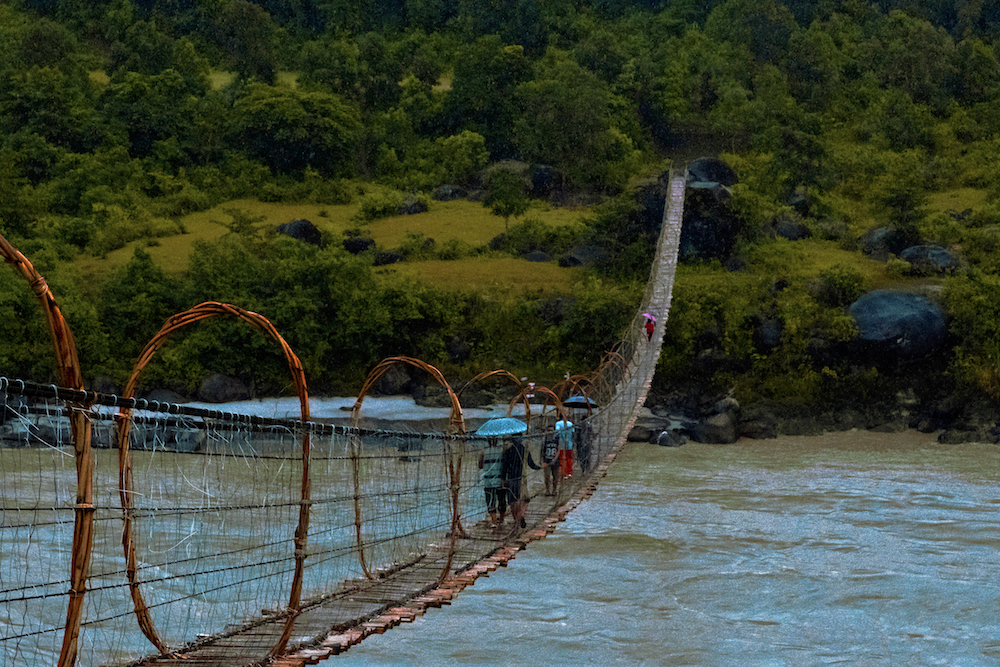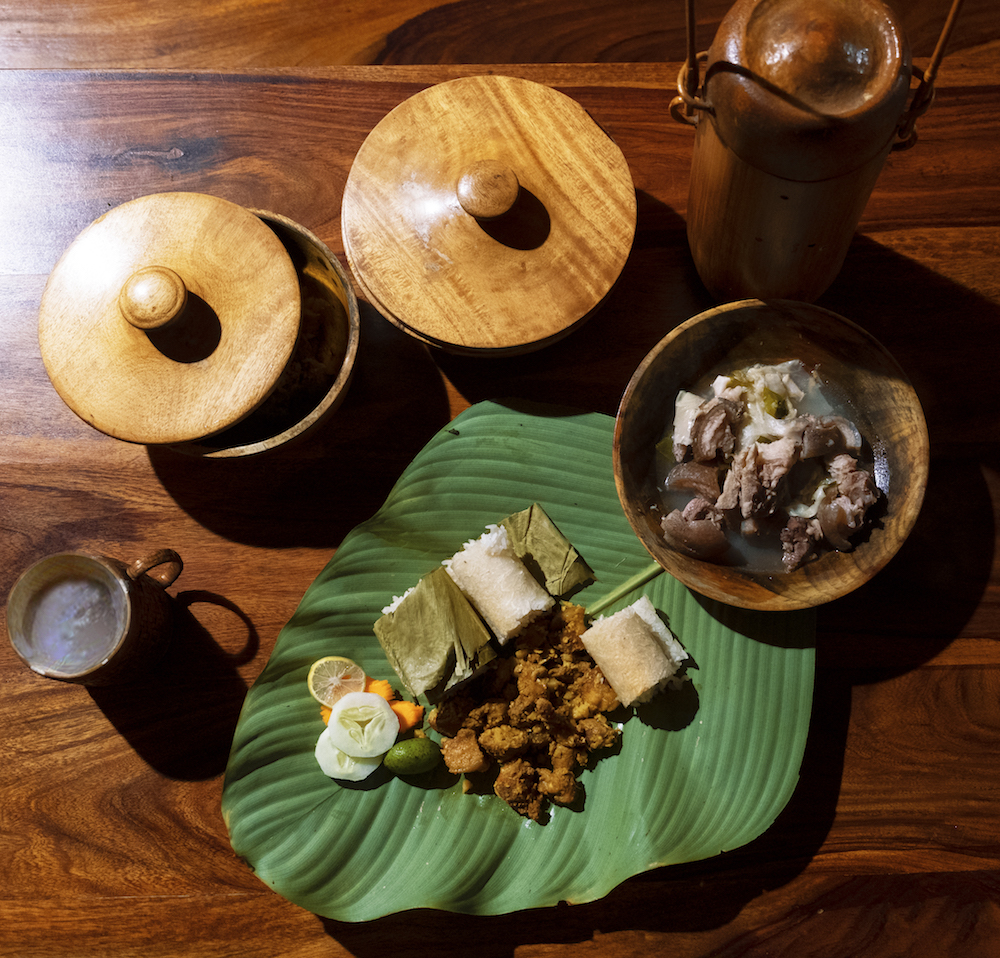Neetole Mitra travels to Central Arunachal Pradesh to cook the traditional Ma Dong dish

Someone has started a raging fire in the middle of the room. Dripping men have walked in from never ending rains outside; wading through dark and slush. The warm central fireplace is the best spot to seek comforts in the Adi home they have entered – a wooden rectangle put together with bamboos, cane, dry leaves and bark, balanced on raised stilts. The gaps in the walls and floor offer ventilation to the earthiness of the room. An assortment of Dao (single-edged Chinese saber) jut out from odd corners. Odd tokens from the rainforests that surround the village adorn the edges of the room – cured animal hides, eagle feather hand-fans, a furry black bear skin bag and a grey mass of animal skulls darkened with age.
Sights like these are common in the villages of Upper Siang and East Siang districts of Central Arunachal Pradesh – the largest north-eastern state of India. The width of the Brahmaputra segregates the region from the rest of the country while the dense rainforests, with an imaginative assortment of wildlife prowling its depths, offer exclusivity. Cluster of leaf roofs peaking from forests form independent settlements, with the Gao Burra (village elder) at the centre of all administrative issues.

The Adi tribe lead a simple life but they are a fierce and proud community of people; not ones to oversee an insult easily. The British Empire unfortunately learnt this the hard way. Tapir Darang, a proud Adi and my host in Abor Country in Pasighat tells me about Manmur Jamoh, his ancestor from the same sub-tribe. Jamoh is a local legend. The man hacked a British officer to death in 1911 to avenge his lost pride (an example of early imperial resistance by the hill tribes of Arunachal Pradesh). Noel Williamson who had made a disparaging comment about Jamoh’s skin condition in 1909, had no idea the man was waiting for him to return. Williamson’s gory end triggered the bloody Anglo-Abor Wars of 1911 resulting in many brutalities against the community and the beginning of permanent Colonial presence in an area that was left untouched thus far. The term Abor, lent to the Adi tribe by the British back in the days is now deemed an inappropriate slur.

The Adi sub-tribes live a no frills kind of life – the community is as much a part of the forest as the forest is a part of them. The tribe doesn’t just draw extensively from nature but also worships it. Every ailment here has a natural remedy; every social custom is mixed with the elements of nature. Even folk tales that have survived generations of oral narrations talk about carving out animals from giant evil rocks and the creation of the world from earth (Sedi) and sky (Melo).

For the Adi tribe, hunting isn’t just survival but also a part of their culture and customs. During Unying Aran Giidi festival, Adi tribesmen pack off to the forest for a week, returning with their catch for the consumption of the entire community. Some of it even acts as bride price, particularly the Kebung squirrels. Nothing goes to waste. Even the skulls become family heirlooms passed down generations. It’s a nature-based life reflected directly in their culinary traditions.

Tapir Darang cooks the traditional Ma Dong – literally translating to ‘food in bamboo’ – a special treat for the evening. Traditionally, Adi tribesmen would pack rice, and basic condiments like salt and dried bamboo-shoot powder when they went out on hunting expeditions or set up machan (a raised platform) to tend to their seasonal farms, away from the village. The forest and river provided meat or fish and all one needed was to find the abundant bamboo to cook their meals in.

It is a way of preparation more than a particular recipe. A lesson in sustainable living from the Adi tribe to the rest of the world. One of the key ingredients for the recipe is the Ekkam patta (Phyrnium – a banana like plant) – a sturdy and large leaf that serve as base. At Abor Country I try two variations of this dish – Ngo Dong (bamboo fish) and Ek Adin Dong (pork bamboo). While the fish is cooked with just a sprinkling of salt, turmeric and ginger paste, the meat is marinated with chilli powder, salt, ginger-garlic paste and a sprinkling of dry bamboo shoot before it is wrapped in Ekkam patta and stuffed inside the bamboo barrel. The rice which has been soaked for 15 minutes is drained and similarly encased. The last step is to roast the barrels in open fire till the leaves become a shade of olive.

Ma Dong
Ingredients
500 gm pork
2 tsp turmeric
1 (1-inch piece) ginger
3 garlic cloves
2 tsp chilli powder
1 tbsp dry bamboo shoot (Eup)
1 sheet of fresh bamboo shoot (Ekung)
Salt to taste
250 gm rice
2 Phyrnium leaves (Ekkam patta)
2 foot-long Bamboo barrels

Directions
- Soak rice in water and set aside for 15 minutes.
- Make a paste of the ginger and garlic.
- Mix turmeric, chilli powder, salt and ginger-garlic paste with the pork. Add the bamboo shoot powder. Adding the ekung is optional but might add a layer of tanginess to the meat.
- Set the meat aside for 30-minutes.
- Chop off the edges of the Phyrnium leaves and place the meat at the centre. Carefully wrap it in a tube and slide inside the Bamboo barrel. Seal the top with a roll of the leftover Phyrnium leaf.
- Drain the rice and wrap it in the Phyrnium leave same as with the meat. Slide in Bamboo barrel and seal with a roll of the leaf.
- Cook the bamboo barrels in open wood fire, rotating occasionally so as to avoid charring one side and undercooking the other.
- Remove from flame when the leaf seal on the top becomes olive green and the bamboo is a deep shade of black.
- Break the barrels open and serve hot.
- The rice can be served as a spread or cut out into leaf wrapped rolls.
Neetole Mitra is a travel writer and photographer chasing off-beat experiences on LivingUnplanned & @livingunplanned.